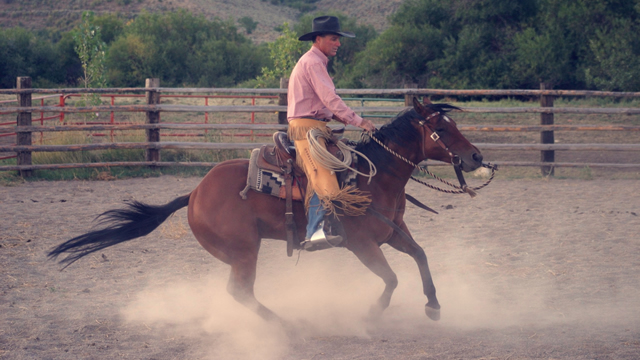Written by Martin Black
This article originally appeared in Eclectic Horseman Issue No.41
If we don’t have jobs for our horse we need to create some. A horse seems to do better in his learning if he can have a purpose. The better our judgment is on how much to expect of him the more productive our time can be while he is learning.
Whether we are doing a real job or we create a job, we need to have some level of control so that we can position our horse to open a gate, cross a creek, work a cow, etc. Sometimes the success of the job may depend on a correct step, or even a half step in the correct direction.
The speed of the movement can be important. Whether the hind quarters, the front quarters or both of them at the same time can be moved laterally in the same direction or in opposite directions may determine the success of the job we need to get done. We need to be able to move each end or both ends any direction. A good exercise to develop some communication between us and the horse is to pick a pivot foot and move the other three feet around it, without moving the pivot foot. Without some practice, this can even be a challenge for a broke horse.
Pick the right front foot and keep weight on it, so it does not leave the ground. Then with the other three feet moving forward and over, turn the horse around 360 degrees. Easy enough? Then with the other three feet stepping backwards, turn 360 degrees.
The ultimate goal is to be able to rotate the horse forward or backward and full circle while pivoting on each of the four feet. In order to do this, we have to be able to not only feel what feet are moving what direction, but feel the weight shifting before the feet move. If we wait to see what foot moves, it may be too late to stop or redirect the other feet the direction we need to go.
If we have trouble with this, a couple of things can help. One is to have someone be your eyes for you. If you are trying to look at what the feet are doing, you won’t be focusing on feeling what the feet are doing the way you need to be. Try to feel what the feet are preparing to do and have someone call out what is actually happening.
Feel the withers tip right, left, forward or backwards. Feel the hip shift right, left, forward or backwards. The horse will shift his weight in order to prepare to move each foot. If the weight isn’t positioning correctly, the feet are not going to follow through correctly.
We need to develop enough feel to know what is shaping up with the horse. The horse needs to develop enough feel with our hands, legs and weight in order to understand what we are trying to shape up.
The other thing is to only move one or two steps and evaluate what happened. Whether you are alone or have some one calling steps for you, focus on what you feel, then add the visual to the equation.
Another thing this can do is to focus on the first step being the step we need. If we need to step the hind feet forward and to the right, and the front takes two or three steps before the hind can move for us, this may wreck what we were trying to position for.
Whether your horse did what you were asking or not, evaluate how he started out and how he interpreted what you were asking. If you are getting too much forward motion when he feels your leg, you may need to shift his weight back to ensure contact and to convey the message that you are ready to block forward movement, so the leg can be interpreted for lateral movement.
If the front end moves laterally before the hind end, shift the weight off the front end one direction first with the reins.Then try to move the hind end the opposite direction with your leg.
Again, if the movement doesn’t start right, stop, evaluate what you did, how the horse responded to it, and then try again. Don’t panic and get in a hurry. If you are going the wrong direction and you speed up, you just get to the wrong place quicker.
This article originally appeared in Eclectic Horseman Issue No.41


